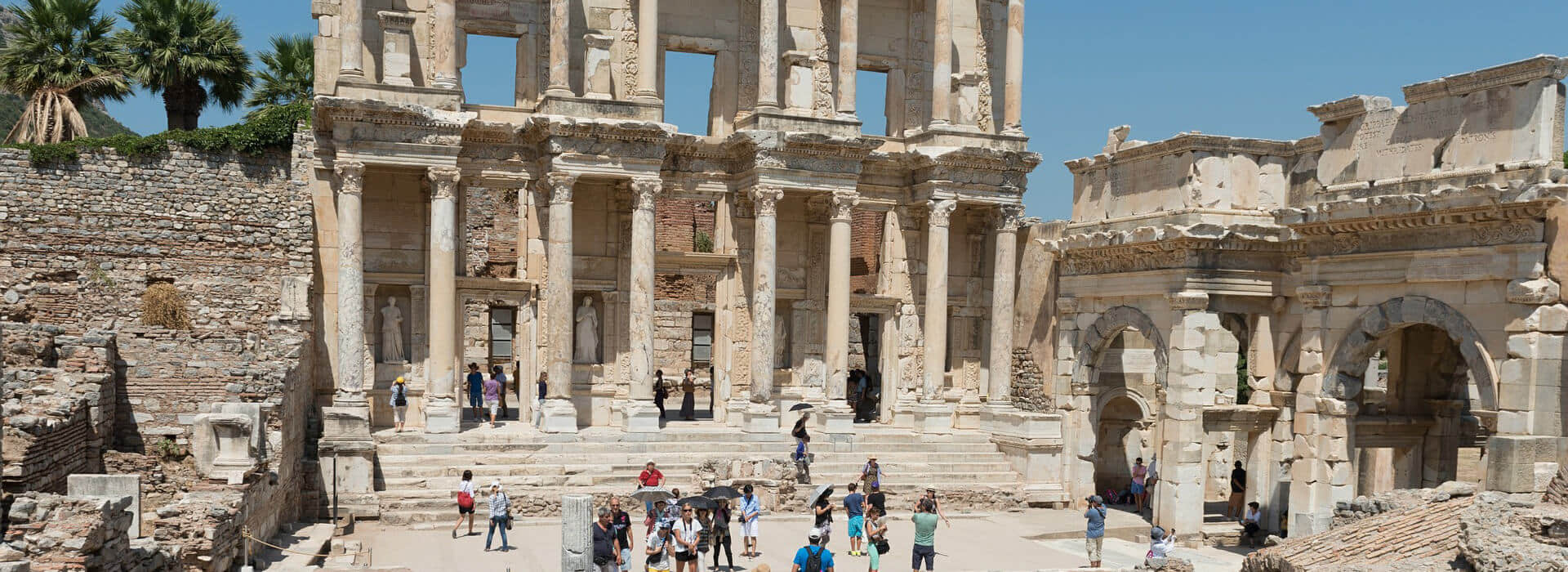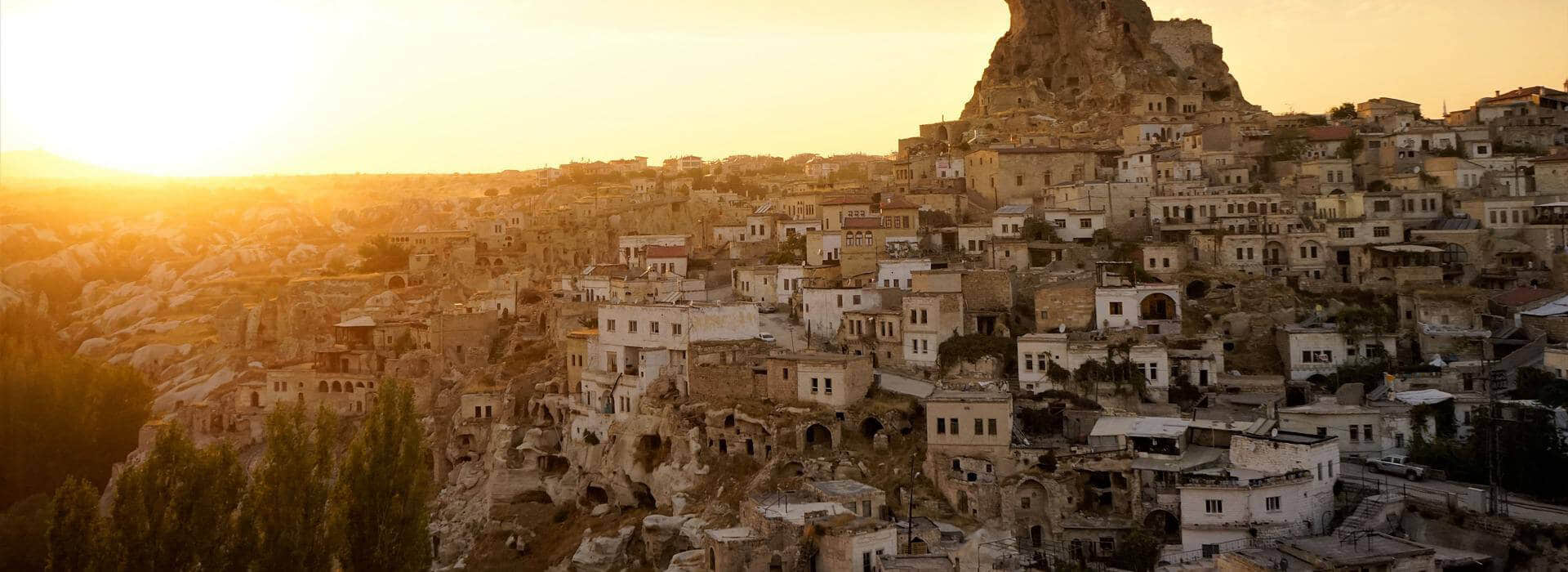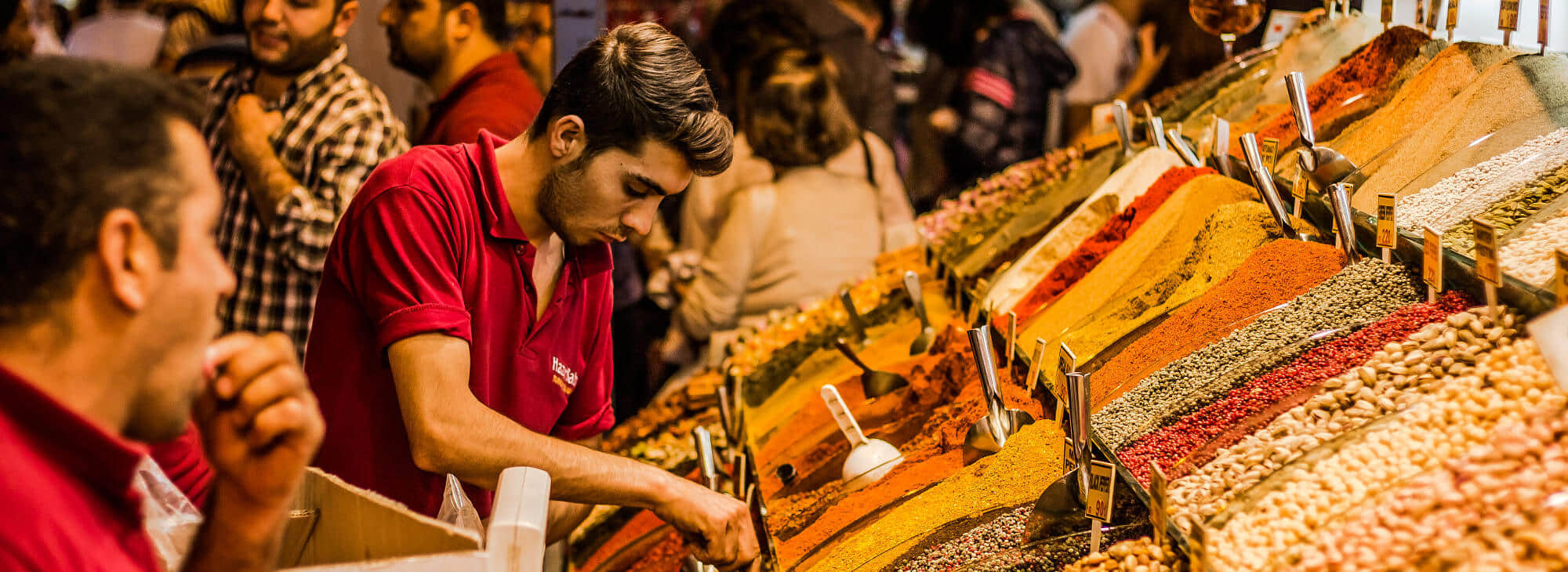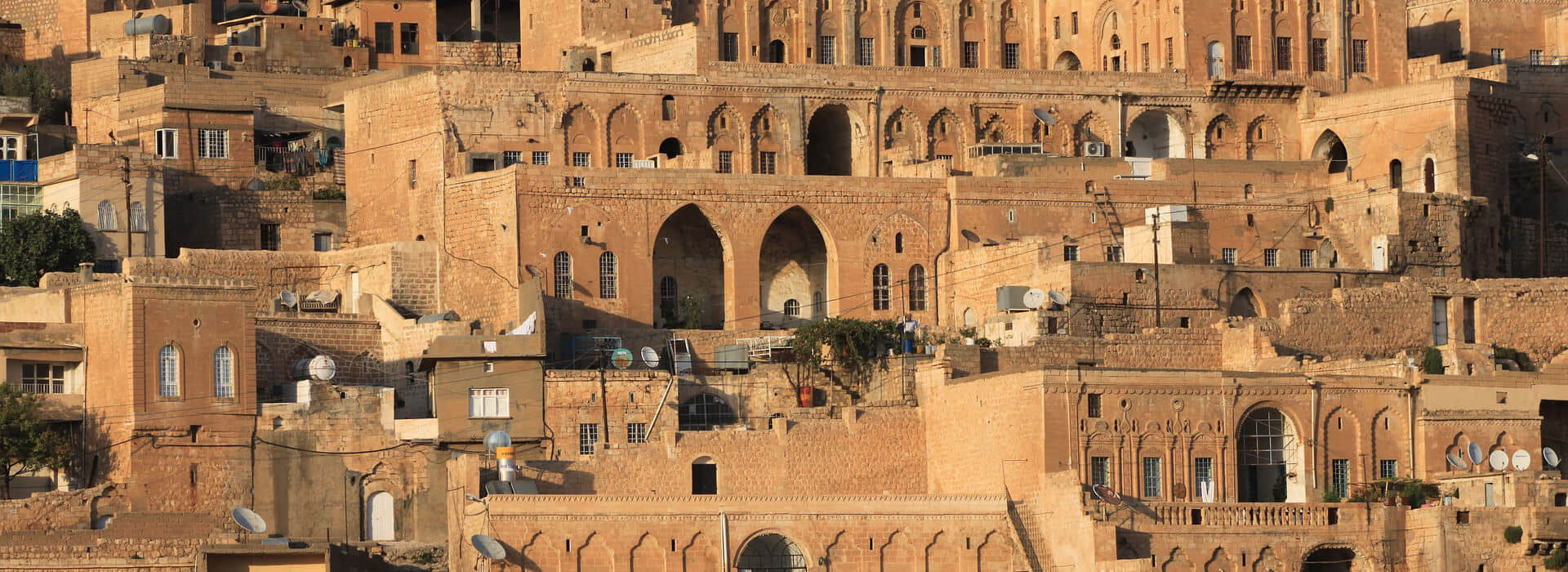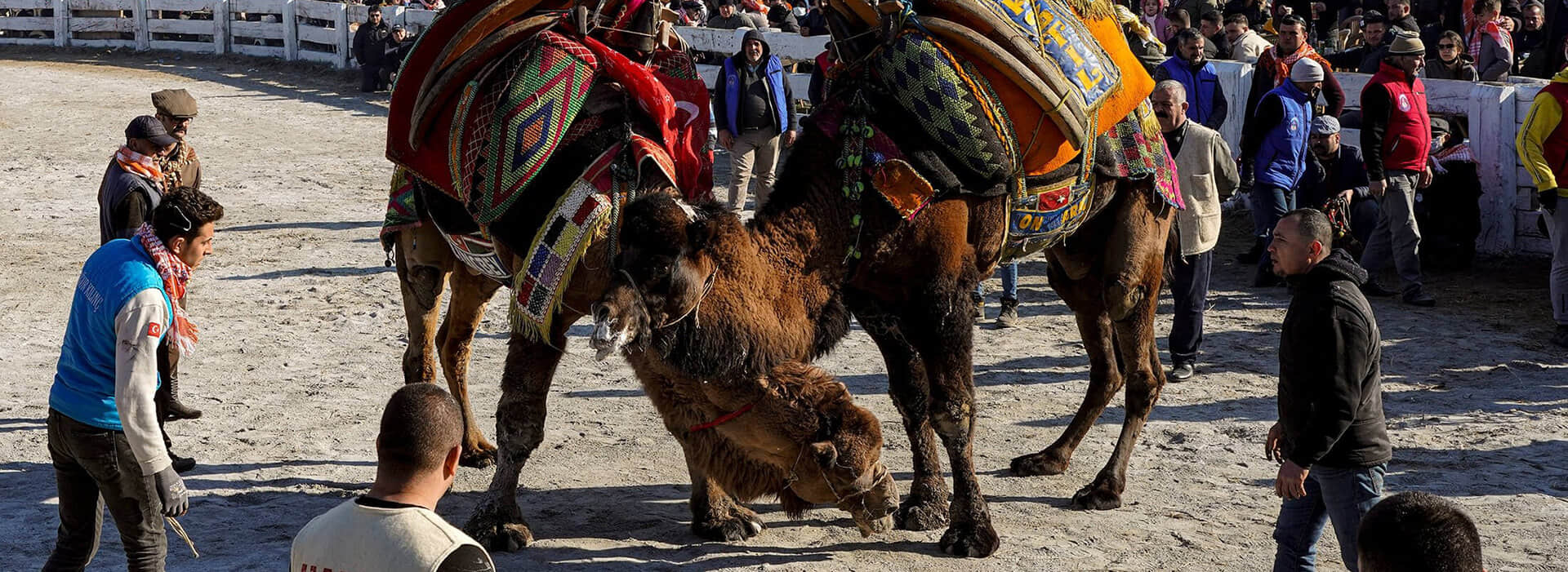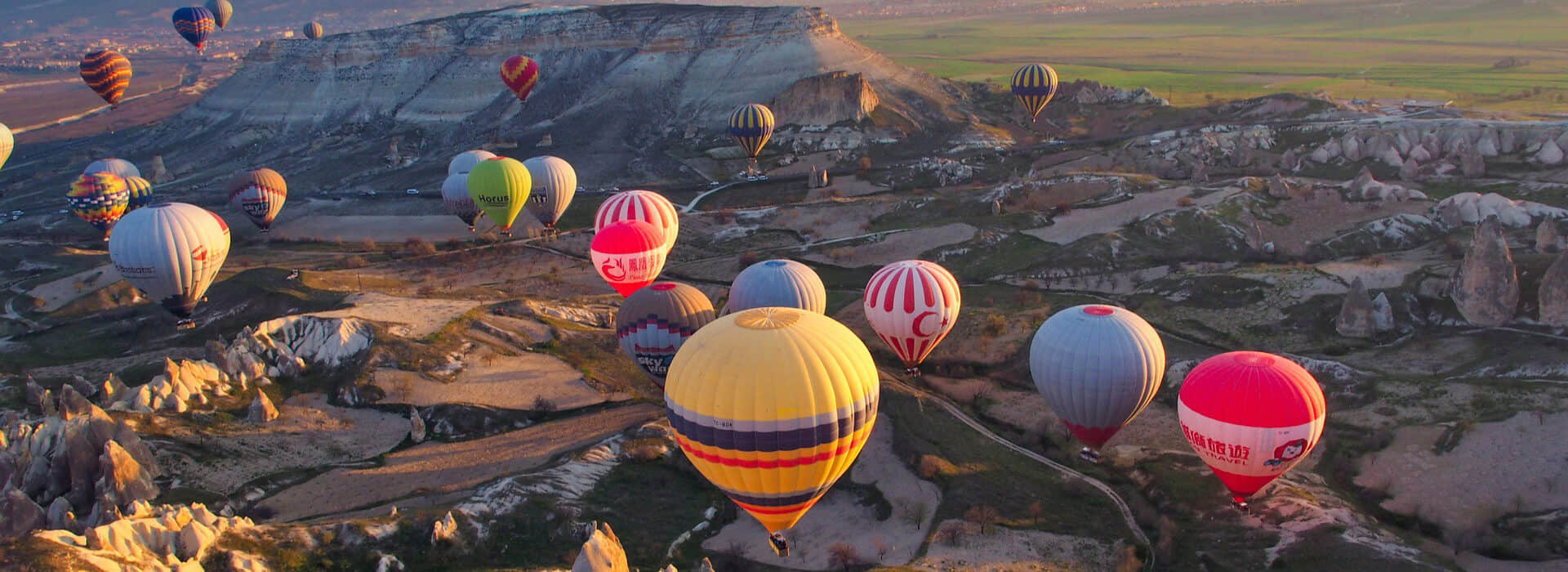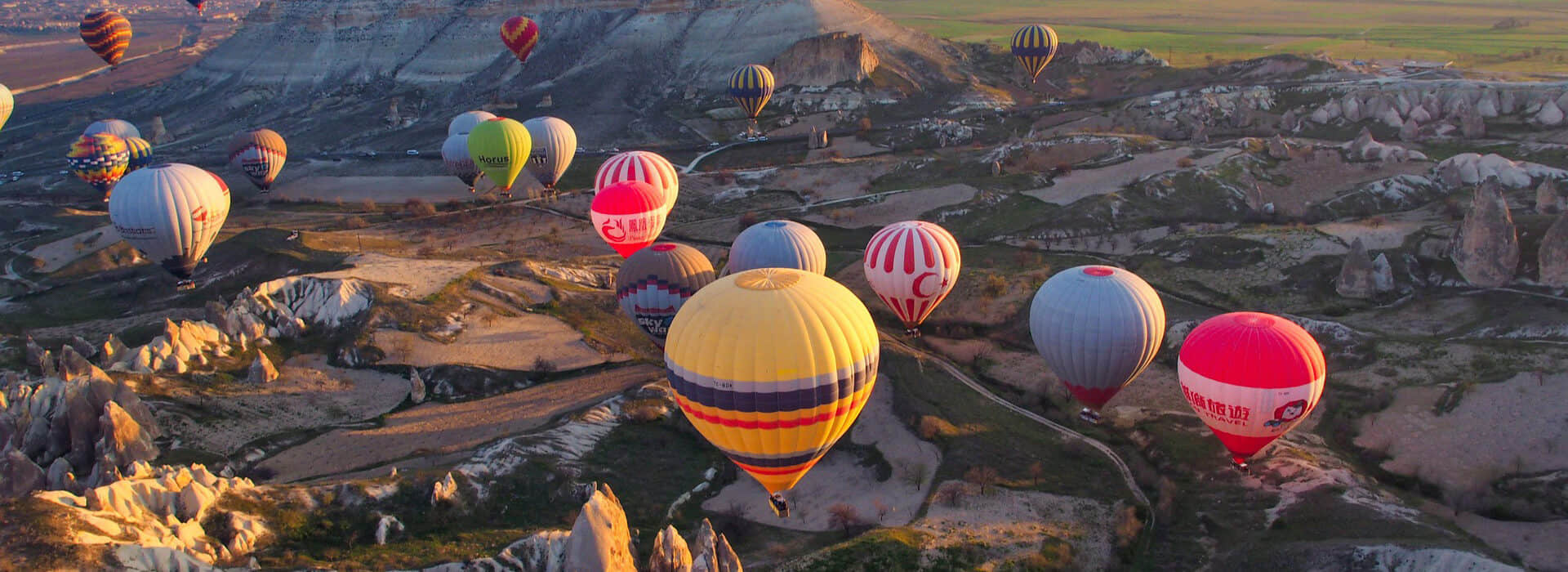10 Must-Visit Attractions in Turkey
Steeped in history with a landscape that encompasses beaches and soaring mountains, Turkey has acted as the gateway between Europe and Asia for thousands of years. Whether you want to lap up the Byzantine and Ottoman glories of Istanbul on a city break, laze on the beach, delve into history wandering through ruins such as Ephesus, or see some of the world's most surreal panoramas in Pamukkale and Cappadocia, this country offers visitors a wide range of things to do.
#1. Hagia Sophia
This Byzantine-style building is of great historical significance in Turkey. The marble floor and unique patterns in it can give people a very warm atmosphere as a whole, and the various Byzantine-style murals are even more impressive.
Located in Istanbul, the Hagia Sophia was originally a basilica constructed for the Eastern Roman Emperor Justinian I in the sixth century. A masterwork of Roman engineering, the massive dome (31 meters or 102 feet in diameter) covers what was for over 1000 years the largest enclosed space in the world. The church was looted by the fourth Crusaders in 1204, and became a mosque in the 15th century when The Ottomans conquered the city. The Hagia Sophia was converted into a museum in 1935.
#2. The Blue Mosque
With blue tiles and hundreds of small windows, the Sultan Ahmed or Blue Mosque in Istanbul impresses visitors from all over the world. While still used as a mosque, the Blue Mosque has also become one of the most popular tourist attractions in Istanbul. It was built between 1609 and 1616 and like many other mosques contains the tomb of the founder. Inside the mosque, the high ceiling is lined with the 20,000 blue tiles with different patterns that give the mosque its popular name.
One of the most appreciated characteristics of Blue Mosque is its architectural properties that combine traditional Islamic arts, Ottoman architectural traces, and a few Byzantine characters.
#3. Ephesus
Of all the ruins and archaeological tourist attractions in Turkey, Ephesus is the most famous. Visitors from around the world come here to walk down the well-preserved Roman streets, gaze at the mighty monuments, and soak up the ancient soul of this ruined city.
The city's history dates back to the 10th century BCE, but the major monuments you see today all date from its Roman era when it was a thriving commercial center.
In particular, the Library of Celsus, the complex of frescoed terraced houses, and the Great Theater all point to the wealth and importance of Ephesus during the Roman period.
A sightseeing trip here will take at least half a day to cover the major highlights and longer, if you really want to explore, so make sure you plan your visit so you don't feel rushed.
#4. The Istanbul Grand Bazaar
The Istanbul Grand Bazaar (Kapalıçarşı) is one of the largest and oldest markets in the world, and the best place to shop for artisan goods, jewels and clothes. The total area of the market is 45,000 square metres, and 20,000 people work inside. The Istanbul Grand Bazaar has more than 3,600 shops which are spread out over 64 streets, and there are 22 doors which give access to the market.
The market opened in 1461, and has enticed countless customers to explore its wonders. The domed bedestens(domed buildings) in the market was built between 1455 and 1461.The 16th century saw the expansion of Istanbul’s Grand Bazaar. However, an earthquake prompted restoration in the structure in 1894.
#5. Basilica Cistern Istanbul
It is known as the most mysterious and romantic tourist attraction in Turkey. Many Hollywood movies were shot here. One of the most famous is From Russia with Love in 1963, the second James Bond film.
It is one of the most splendid historical buildings in Istanbul. This Cistern measures approximately 138 meters (453 ft) by 64.6 meters (212 ft) and is capable of holding 80,000 cubic meters (2,800,000 cu ft) of water. The Cistern shelters 336 columns, each of which is 9 m high. This large underground cistern built by Byzantine Emperor Justinian I (527-565) was named as Yerebatan Palace were among the people due to the marble columns rising from the water and countless seemingly like.
It is known as Basilica Cistern since there is a Basilica in the place where the cistern is located.
#6. Pamukkale (cotton castle)
Pamukkale, meaning “cotton castle” in Turkish, is an unreal landscape in western Turkey, famous for its white terraces. The terraces are made of travertine, a sedimentary rock deposited by water with a very high mineral content from the hot springs. People have bathed in its pools for thousands of years.
In the total area, there are 17 thermal springs which range in temperatures from 35 degrees Celcius (95 degrees Fahrenheit) all the way up to 100 degrees Celcius (212 degrees Fahrenheit), so some of the pools will not be suitable for swimming. Don’t even get close to the hottest springs!
The ancient Greek city of Hierapolis was built on top of the hot springs by the kings of Pergamon. The ruins of the baths, temples and other Greek monuments can be seen at the site.
#7. Sirince Village
Sirince is 8 km from Selçuk and 12 km from the ancient city of Ephesus. The village is famous for its wines made from the grapes grown in the village. Visitors to Sirince can see how the wines are produced and taste the wines.
Today the village is a perfect synthesis of Turk-Greek culture as of the 1920's: after the Independence War(1919-1923), as part of the Treaty of Lausanne in 1923, Greece and Turkey agreed to uproot two million people in a massive population exchange. Orthodox Greeks of the Ottoman Empire relocated to Greece, in exchange Muslims living in Greece going to Turkey.
All those typical Greek houses, though they kept their original outside characteristics, have received the local layout inside. The most beautiful specimens are open to visitors. And even in the courtyard of one of them, one will discover a nicely restored Orthodox church.
#8. St. John's the Baptist Church
Built on the supposed site of the St. John's tomb, the church formed part of a building program that included the massive Hagia Sophia in Constantinople and the Basilica of Sant’Apollinare Nuovo in Ravenna. In its medieval heyday, the basilica was a major pilgrimage site, sitting directly on the overland route to the Holy Land. The architectural icon of St. Mark’s Basilica in Venice copied the design of St. John’s, which like its Venetian counterpart was lined with gold mosaics depicting saints and gospel stories.
Now-lost relics once held in the basilica included a piece of the True Cross that John carried around his neck, a garment worn by the saint made by the Virgin Mary, and the original manuscript of John’s Book of Revelation.
#9. Derinkuyu Underground City in Cappadocia
There are more than 36 underground cities in Cappadocia. Derinkuyu Underground City is the deepest one. Derinkuyu means deep well, it is indeed the deepest and one of the largest underground city of Cappadocia region. The exact construction date of this amazing human made underground city and cave networks are not known.
Archaeologist states that use of Derinkuyu underground city goes back to the Hittites 1900-1200 BC during the Bronze Age.
At a depth of more than 250 feet with a capacity of up to 20,000 people, this multi-leveled city contained everything an entire population would need to survive in case of invasions. Each story or level of the underground city has a different function and huge air ventilation shaft is centering them to circulate the fresh air.
#10. Topkapi Palace
Covering an area of 700,000 square meters, Topkapi Palace was main residence and administrative headquarters to the Ottoman sultans from about 1478 to 1856. It opened as a museum in 1924, a year after the establishment of the Republic of Turkey. The Topkapı Palace Museum is notable not only for its architecture and collections but also for the history and culture of the Ottoman Empire that it recalls.
It has four courtyards.
The first courtyard (also known as the Outer Courtyard) is the largest and only public courtyard. Any unarmed person could enter through the Imperial Gate.
The second courtyard was the administrative centre of the palace. Only official visitors and members of the court could enter the space. The second courtyard was also home to the palace kitchens, which now display the imperial porcelain collection, as well as the External Treasury, which exhibits the imperial weapons.
The third courtyard is private residence of the sultan and the inner palace school. Only the sultan, members of his family, his servants, and the occasional approved visitor could enter.
The fourth courtyard consists primarily of terraced gardens and pavilions.
